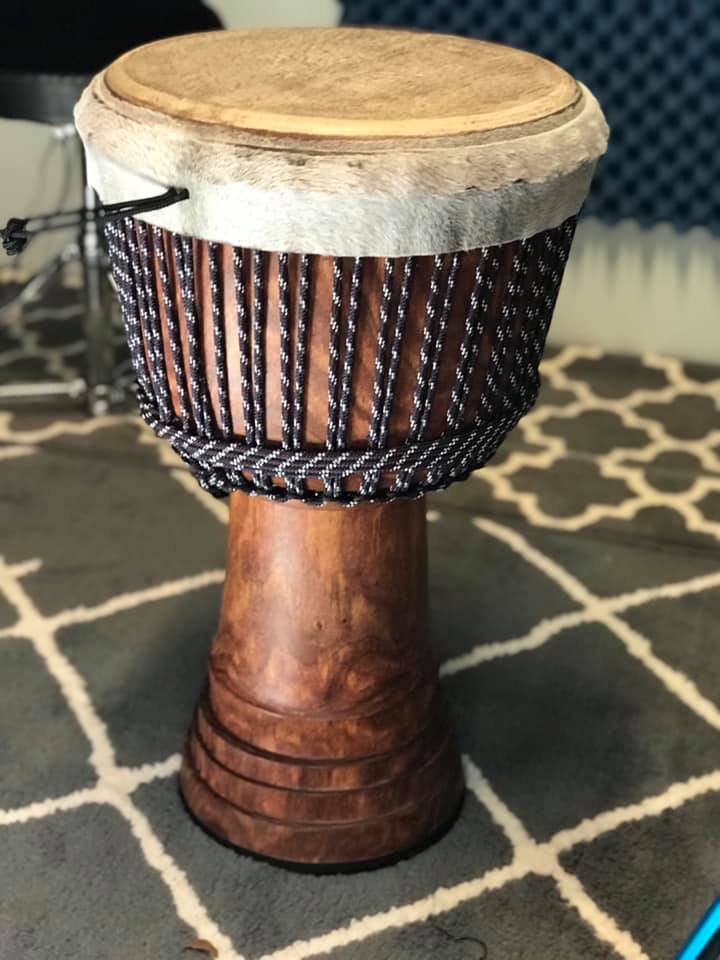The Djembe Drum-
Here is an overview and a little bit of information I have gathered from others about the djembe drum we know and love. There is a lot of different data and opinions. This is simply to give you a short overview and not meant as the last or final word. As you will see the djembe is not a toy and a lot goes into it, and comes out of it!
The djembe drum is said to have been invented in the 12th Century by the Mandinke tribe in what is now Mali, in West Africa. It has been played by West Africans for generations forming an integral part of ritualistic life in Mali, Guinea, Senegal and other neighbouring West African countries.
The djembe has been an integral part of spiritual and ritualistic life in West Africa for many generations.
The drum is inextricably linked with singing and dancing, and any aspiring djembefola (djembe player) must also learn the accompanying songs and dance moves to the rhythms they perform. Various dances have different symbolic meanings, and are performed at important events such as festivals calling for rain or a good harvest, or at ceremonies like births, weddings and funerals. Full moon gatherings, baby naming ceremonies and many other uses as well.
Some say the name of the djembe came from the Bamana in Mali, who said “Anke dje, anke be” to call their people together, as the saying translates as “everyone gather together.” “Dje” means gather and “be” means everyone, which gave the drum used in these calls to order its name.
According to highly respected djembefola, Abdoulaye Diakite,*(R.I.P.) the drum was originally called jebe barra, meaning unity drum.
It is taught that the Blacksmiths (Numu) made the first djembes, making each drum custom-fitted to the drummer who would play it. This makes sense as they would be the people to cut the tree. The making of the drum was spiritual, and the blacksmith was obliged to make offerings to the spirits of the trees he cut down. With the lengue tree, a sacrifice would be made to ask for permission to cut the tree for a djembe.
Once the blacksmith finished the djembe, it was delivered to the drummer who commissioned it, (possibly) a member of the jeli caste. The jeli are musicians, who are responsible for the oral history of their people. This remains true to today.
Some say that the Numu of the Malinke people of Guinea were the first to carve a djembe and originally played the drum only during the smelting of iron ore. Another story tells of a woman who broke through the bottom of an old mortar as she was pounding millet and had the ingenuity to mount a skin on it. There are a lot of interesting stories, too many to list.
Keep in mind your modern djembe drum is the end product of many different peoples ideas and concepts. The modern djembe has non African derived rope, welded metal rings and sometimes decorations derived from other places. The modern tuning system comes from an evolution of concepts with help from others outside of the West African continent.

